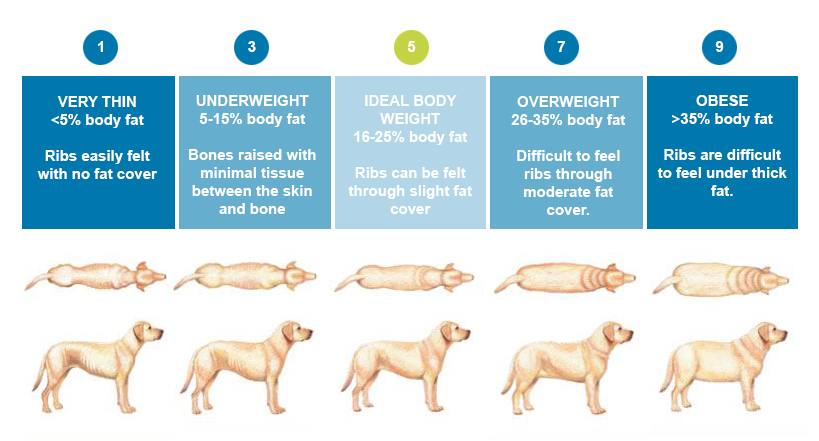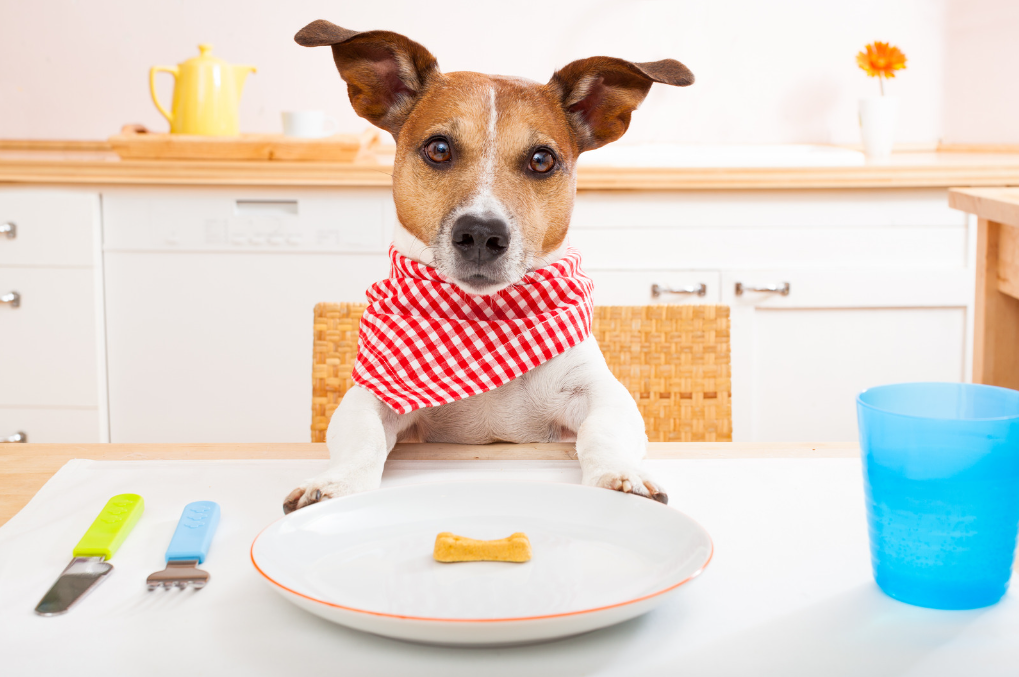
Today let’s chat about canine obesity the dreaded topic when you bring your pet to the vet. Discussing their pet’s weight is often a source of anxiety for pet owners. The purpose of this post is to take an objective approach to canine obesity and demonstrate the prevalence of this disease. Canine obesity has become one of the most prolific diseases in the veterinary patient population. Statistics quote that over 50% of our canine patients are considered overweight. It has become such as issue that our perception of a healthy weight for a dog has become skewed as well. However, its prevalence does not diminish the importance of it as a disease process. The effects of obesity range from joint disease to respiratory disease, to skin disease and overall poorer quality of life. For medium and large breed dogs, mobility which can often be directly connected to obesity, more times than not becomes the limiting factor for longevity. Patients with tracheal collapse or laryngeal paralysis are also directly negatively impacted by obesity. There are so many disease processes that are directly caused or directly worsened by obesity.
Body Scoring For Your Pet's Health
Canine obesity is defined using a Body Condition Score (BCS). This is a process by which a veterinary professional palpates areas of the pet to assess fat coverage and fat percentage to assign a score from 1-9. 1/9 is incredibly thin or underweight and 9/9 is obese. There are several different scales used in veterinary practice, but this scale is common in companion animal practice. The BCS scoring is often more important than the actual weight of the patient because it helps to take different body conformations and musculature into account. An ideal BCS for pets is a 4-5/9.

Treatment Plan Essentials
Just like any chronic disease, having a treatment plan and being prepared is paramount. We encourage owners to schedule veterinary consultations to rule out any underlying medical conditions that might impact a pet’s metabolism and ability to lose weight. At these appointments, your veterinary team will weigh your pet, assign a body condition score and discuss a treatment plan customized to you and your pet’s specific needs. As with any weight loss plan, it all comes down to calories consumed and calories used. For any pet to lose weight the calories consumed must be less than the calories used. However, there are many factors that play a role in how your pet uses those calories. Many different disease processes will affect your pet’s metabolism. If present, these diseases must be identified and managed by a veterinarian for a weight loss plan to be successful.
A general recommendation prior to your veterinary visit is to identify how much food your pet is actually eating in a day. It is recommended to use cooking measurements such as measuring cups and to do distinct meals. Next, identify the pet food brand and any treats or chews your pet is consuming in a day. Most commercial pet foods will have a kilocalories/cup or equivalent measurement on the bag or on the pet food’s website. Identify how many calories your pet is currently eating. For example, feeding 1 cup in the morning and evening of 400 kcal/cup food will result in a daily caloric intake of 800 kcal. Using this information, you and your veterinary team can decide if the number of calories consumed in a day is appropriate for weight loss in your pet or if a reduction needs to be made. Reductions should be made incrementally with no more than 15-20% of calories being reduced a week.
Once your plan is in place, implementation and management are often the most important aspects of success. The most crucial tool is regular weigh-ins. Pets should be weighed every 1-3 weeks while trying to lose weight. Small dogs can be picked up and weight at home by subtracting the person holding the pet’s weight from the total. Larger dogs may be brought to the vet to use the larger floor scale. The second tool is switching higher calorie treats and people's food for frozen green beans, carrots, or other low calories snacks. Lastly, switching pets to an over-the-counter or prescription weight loss food is often helpful. Most weight-loss foods have increased the amount of fiber to help pets feel full without extra calories. They are often less calorie dense, so the same volume of food has fewer calories.

Overall, canine obesity is a challenging disease to manage. Owners often use food as a means of connecting with their pets and have difficulty redirecting that connection. However, it is an incredibly important disease process to address. A recent study conducted by Purina showed that pets that have a lean BCS live an average of two years longer than overweight pets. Talk to your vet; there are ways to make the process smooth and less stressful for you and your pet.
Written by Rachel Kennedy, DVM
